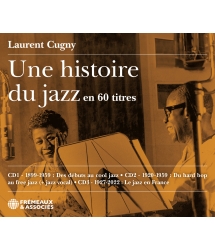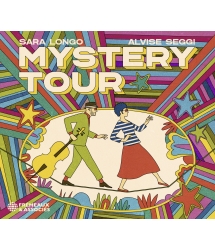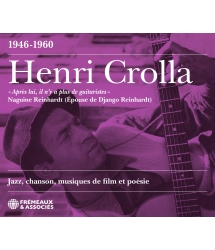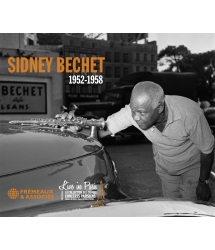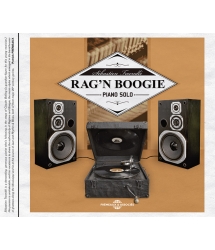- Our Catalog
- Philosophy
- Philosophers of the 20th century and today
- History of Philosophy (PUF)
- Counter-History and Brief Encyclopedia by Michel Onfray
- The philosophical work explained by Luc Ferry
- Ancient thought
- Thinkers of yesterday as seen by the philosophers of today
- Historical philosophical texts interpreted by great actors
- History
- Books (in French)
- Social science
- Historical words
- Audiobooks & Literature
- Our Catalog
- Jazz
- Blues
- Rock - Country - Cajun
- French song
- World music
- Africa
- France
- Québec / Canada
- Hawaï
- West Indies
- Caribbean
- Cuba & Afro-cubain
- Mexico
- South America
- Tango
- Brazil
- Tzigane / Gypsy
- Fado / Portugal
- Flamenco / Spain
- Yiddish / Israel
- China
- Tibet / Nepal
- Asia
- Indian Ocean / Madagascar
- Japan
- Indonesia
- Oceania
- India
- Bangladesh
- USSR / Communist songs
- World music / Miscellaneous
- Classical music
- Composers - Movie Soundtracks
- Sounds of nature
- Our Catalog
- Youth
- Philosophy
- News
- How to order ?
- Receive the catalog
- Manifesto
- Dictionnary











- Our Catalog
- Philosophy
- Philosophers of the 20th century and today
- History of Philosophy (PUF)
- Counter-History and Brief Encyclopedia by Michel Onfray
- The philosophical work explained by Luc Ferry
- Ancient thought
- Thinkers of yesterday as seen by the philosophers of today
- Historical philosophical texts interpreted by great actors
- History
- Books (in French)
- Social science
- Historical words
- Audiobooks & Literature
- Our Catalog
- Jazz
- Blues
- Rock - Country - Cajun
- French song
- World music
- Africa
- France
- Québec / Canada
- Hawaï
- West Indies
- Caribbean
- Cuba & Afro-cubain
- Mexico
- South America
- Tango
- Brazil
- Tzigane / Gypsy
- Fado / Portugal
- Flamenco / Spain
- Yiddish / Israel
- China
- Tibet / Nepal
- Asia
- Indian Ocean / Madagascar
- Japan
- Indonesia
- Oceania
- India
- Bangladesh
- USSR / Communist songs
- World music / Miscellaneous
- Classical music
- Composers - Movie Soundtracks
- Sounds of nature
- Our Catalog
- Youth
- Philosophy
- News
- How to order ?
- Receive the catalog
- Manifesto
- Dictionnary
CLAUDE BOLLING
Ref.: FA471
Label : Frémeaux & Associés
Total duration of the pack : 1 hours 8 minutes
Nbre. CD : 1
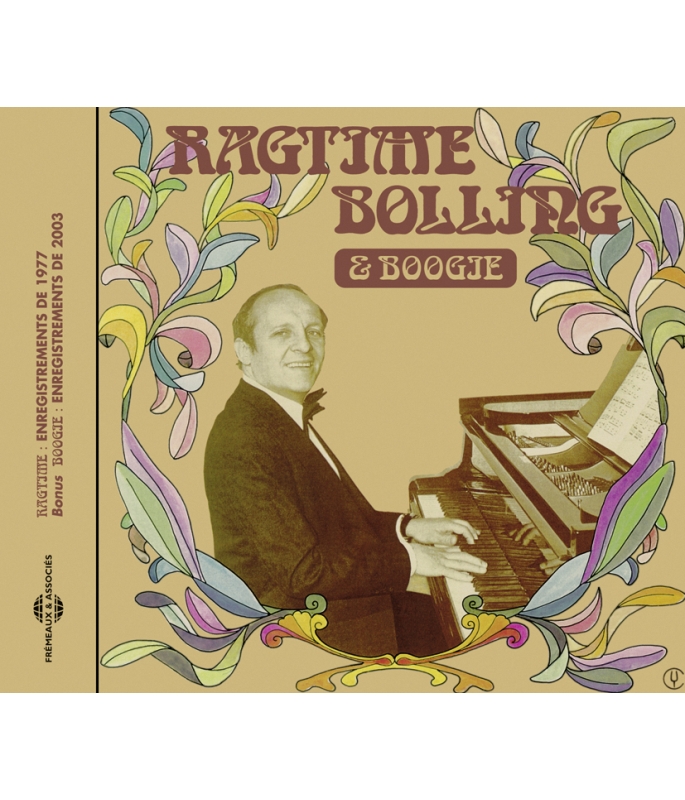
CLAUDE BOLLING
CLAUDE BOLLING
There is absolutely no point in introducing Claude Bolling. Both worlds, the old and the new, know that Claude Bolling is the best. I’m not going to detail his qualities here. I could overlook several of them and it would insult his modesty to again remind us that his verve as a composer can only match his virtuosity as a pianist, and that his arrangements only reach their orchestral supremacy when he himself acts as overseer. Jean-Christophe AVERTY
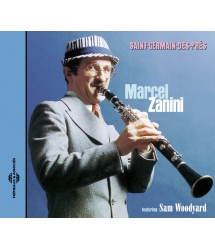
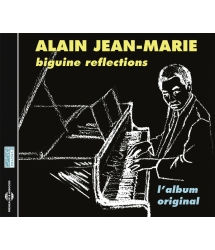

-
PisteTitleMain artistAutorDurationRegistered in
-
1MODERNISTIC RAGCLAUDE BOLLING00:02:341977
-
2SCOTT JOPLIN NEW RAGCLAUDE BOLLING00:03:251977
-
3COUNTRY CLUBCLAUDE BOLLING00:03:341977
-
4GLADIOLUS RAGCLAUDE BOLLING00:03:171977
-
5MY PETCLAUDE BOLLING00:02:301977
-
6IN A MISTCLAUDE BOLLING00:04:111977
-
7CAROLINA SHOUTCLAUDE BOLLING00:02:481977
-
8CHANTECLER RAGCLAUDE BOLLING00:04:361977
-
9THE JAZZ MASTERCLAUDE BOLLING00:03:051977
-
10PASTIME RAG 1CLAUDE BOLLING00:02:331977
-
11PASTIME RAG 2CLAUDE BOLLING00:03:211977
-
12PASTIME RAG 3CLAUDE BOLLING00:02:401977
-
13LOUISIANA GLIDECLAUDE BOLLING00:02:521977
-
14TRIPLETS BASS BOOGIECLAUDE BOLLING00:04:051977
-
153 4 6 8 BOOGIECLAUDE BOLLING00:03:571977
-
16JUST JOCKINCLAUDE BOLLING00:04:271977
-
17SWEET GEORGIA BROWNCLAUDE BOLLING00:05:071977
-
18THE DAYLIGHT DELIGHT BOOGIECLAUDE BOLLING00:05:051977
-
19S F P BOOGIECLAUDE BOLLING00:04:051977
RAGTIME fa471
CLAUDE BOLLING
RAGTIME & BOOGIE
RAGTIME : ENREGISTREMENTS DE 1977
Bonus BOOGIE : ENREGISTREMENTS DE 2003
RAGTIME :
01. Modernistic Rag (Claude Bolling) 2’31
02. Scott Joplin New Rag (Scott Joplin) 3’22
03. Country Club (Scott Joplin) 3’31
04. Gladiolus Rag (Scott Joplin) 3’15
05. My Pet (Zez Confrey) 2’28
06. In a Mist (Bix Beiderbecke) 4’09
07. Carolina Shout (James P. Johnson) 2’46
08. Chantecler Rag (Claude Bolling) 4’33
09. The Jazz Master (Billy Mayerl) 3’03
10. Pastime Rag 1 (Artie Matthews) 2’30
11. Pastime Rag 2 (Artie Matthews) 3’18
12. Pastime Rag 3 (Artie Matthews) 2’36
BOOGIE :
13. Louisiana Glide (Leroy Garnett) 2’50
14. Triplets Bass Boogie (Claude Bolling) 4’02
15. 3/4 6/8 Boogie (Claude Bolling) 3’55
16. Just Jokin’ (Claude Bolling) 4’25
17. Sweet Georgia Brown (M. Pinkard - B. Bernie) 5’06
18. The Daylight delight Boogie (Claude Bolling) 5’03
19. S.F.P. Boogie (Claude Bolling) 4’05
Claude Bolling : piano
Piano : Steinway
Ragtime : enregistré au Studio Davout - Son : Claude Hermelin/Yves Chamberland en 1977
Boogie : enregistré au Studio Cordiboy Records (Cherisy) en novembre 2003
Mastering : Wilfrid Harpaillé - Digital Edge
Il est complètement inutile de présenter Claude Bolling.Tout le monde, que ce soit l’Ancien ou le Nouveau, sait que Claude Bolling est le meilleur.Je ne veux pas énumérer ici ses mérites. Je risquerais d’en omettre plusieurs, et ce serait insulter à sa modestie, que d’oser rappeler une fois encore, que sa verve de compositeur n’a d’égal que sa virtuosité pianistique, et que ses arrangements ne sauraient atteindre leur plénitude orchestrale, que lorsqu’il en dirige lui-même l’exécution... Ouf!Nul n’ignore bien sûr :
- Que Claude Bolling est né à Cannes (France) à l’aube des années trente;- Que Mozart et Bach veillèrent sur son sommeil d’enfant prodige;
- Qu’à quatorze ans et en culotte courte et à Paris (!) il faisait rugir de jalousie confraternelle, mais de jalousie quand même, les mânes de “Fats” Waller;
- Qu’il devint plus tard l’émule et l’ami de Duke Ellington;
- Qu’il (il s’agit toujours de Claude Bolling), obtint une bonne demi-douzaine de fois le grand prix du disque et moultes autres médailles et récompenses;
- Qu’il côtoya valeureusement, au cours d’innombrables séances d’enregistrement, de multiples concerts, galas et festivals, les plus grands des “grands” du jazz;
- Que Jean-Bernard Pommier, Alexandre Lagoya, et Jean-Pierre Rampal n’ont eu qu’à se féliciter de graver sous sa houlette, la savante osmose musicale du jazz et du “classique” que sont la Sonate pour deux pianistes, le Concerto pour guitare et la Suite pour flûte;
- Que nombre de metteurs en scène de cinéma se réjouissent encore de lui avoir laissé le soin d’égrener librement quelques notes, tout au long de la piste sonore de leurs films;
- Que le signataire de ces lignes se flatte d’user de ses services à la télévision sans discrétion aucune;
- Qu’enfin l’amateur forcené et maniaque que je suis, de ragtime, jubile que Claude “Ragtime Dubol” Bolling ait bien voulu de nouveau, “taper” joyeusement sur le clavier délicat d’un Steinway, une sélection judicieuse des œuvres les plus accomplies de Scott Joplin, James Price Johnson, Bix Beiderbecke, Artie Matthews, Zez Confrey, Billy Mayerl... Voilà. J’ai terminé ma rédaction de maître de cérémonie et ce devoir dû à l’amitié et au talent de Claude fut un plaisir à accomplir.
Jean-Christophe AVERTY
ragtime
SCOTT JOPLIN
Pianiste, chanteur, compositeur afro-américain, né le mardi 24 novembre 1868, à Texarkana, Texas, mort à New York dans la misère et dans un oubli quasi total, le 11 avril 1917.Universellement connu pour avoir signé «MAPLE LEAF RAG» (1899) et quelques soixante-huit autres titres génialement syncopés dont un opéra «TREEMONISHA» récemment créé aux États-Unis. Ignoré, méprisé pendant plus de cinquante ans SCOTT JOPLIN doit la pérennité de son nom et de son œuvre au dévouement de RUDI BLESH et d'HARRIET JANIS qui furent les premiers grands historiens du «rag-time» («THEY ALL PLAYED RAGTIME» 1950 KNOPFF NY). On pourra lire avec profit, outre cet ouvrage de base, «SCOTT JOPLIN AND THE RAGTIME ERA» par Peter Gammond, 1975 St. Martin's Press N.Y. «THE ART OF RAGTIME» par William Schafer et Johannes Riedel, 1973 Louisiana State University Press, Bâton Rouge, «THE COLLECTED WORKS OF SCOTT JOPLIN» réunis par VERA BRODSKY LAWRENCE, 1971 The New York Public Library, N.Y., et «RECORDED RAGTIME» 1897-1958 par David A. Jasen, 1973 Archon Books, Hamden Connecticut.Claude Bolling a choisi du «ROI DES COMPOSITEURS DE RAGTIME», «GLADIOLUS RAG» publié en 1907 par la maison Jos. W. Stern de New York. C'est un rag «classique» tout à fait dans la veine lyrique de «MAPLE LEAF RAG» dont il emprunte le déroulement harmonique : «COUNTRY CLUB» A Ragtime two step, sorti des presses de Seminary Music Co. N.Y. en 1909 est un des rags les plus «chantants» de Scott Joplin qui se laisse aller à travers forêts et champs à une bucolique inspiration; et «SCOTT JOPLIN'S NEW RAG» écrit en 1912 pendant les semaines brûlantes d'espoir, où Scott Joplin achevait la partition de son opéra «Treemonisha».Avant-dernier rag à avoir été publié du vivant de Scott Joplin, le «NEW RAG» a un petit parfum de «cake walk» étrangement désuet, mais possède toutes les vertus musicales révolutionnaires qui bouleversèrent à grands coups de syncopes, scottisches, polkas et quadrilles au début du XXe siècle sur les bords du Mississippi.
ARTIE MATTHEWS
Pianiste et compositeur afro-américain né en 1888 à Minonk, Illinois et mort en 1959 à Cincinnati, Ohio. Un des pionniers avec Scott Joplin, Tom Turpin et Louis Chauvin de l'école de Saint-Louis du Missouri. Artie Matthews écrivit en 1915 «WEARY BLUES» qui est inscrit depuis plus de soixante ans au répertoire de tous les Jazz bands de la Nouvelle-Orléans et de Navarre. Claude Bolling a interprété «Weary Blues» de magistrale manière, il y a quelques dix ans sur un disque de longue durée consacré au « boogie-woogie », et la version de Tommy Ladnier et de Mezz Mezzerow gravé en 1939 est encore dans toutes les mémoires. Artie Matthews ne fut pas un auteur très prolifique mais entre deux chansons trouva le temps de composer de charmantes petites pièces d'un grand raffinement mélodique qu'il intitula «PASTIME». L'éditeur de Scott Joplin publia entre 1913 et 1920 cinq de ces délicats «PASTIME» numérotés de 1 à 5 pour la bonne forme. Rarement interprétés ces rags précieux ont retenu l'attention de Claude qui après maintes hésitations a décidé de jouer les numéros 1 et 2 datant de 1913, et le numéro 4, curieusement sorti des presses en 1920, c'est-à-dire deux ans après le numéro 5! Comprenne qui pourra. Réservés «to the happy fews»...
JAMES PRICE JOHNSON
Pianiste, compositeur afro-américain né le 1er février 1891 à New-Brunswick dans le New Jersey, mort le 17 novembre 1955 à New York. Avec Thomas «Fats» Waller, Eubie Blake, Donald Lambert, Joe Turner, Willie Smith, un des pionniers et sans doute aucun, le plus accompli des pianistes de l'école de Harlem. C'est une honte quand on aime le Ragtime et le Jazz d'ignorer James P. Johnson, que le grand public connait pour avoir perpétué le «CHARLESTON» (1923) et un très grand nombre de mélodies à succès comme «OLD FASHIONNED LOVE» (1923), «IF I COULD BE WITH YOU» (1930), «A PORTER'S LOVE SONG TO HIS CHAMBERMAID», «AIN'T CHA GOT MUSIC» (1932), etc.Un vrai «géant» du style de ragtime «stride» cher à la Côte Est des Etats-Unis. Outre plusieurs revues, un opéra, des pièces symphoniques, James P. Johnson est l'auteur de compositions d'une redoutable difficulté d'exécution telles que «CAPRICE RAG» (1914), «HARLEM STRUT» (1917), «KEEP OFF THE GRASS» (1926), «RIFFS» (1930), «OVER THE BARS» (1936), mais son «rag» le plus connu, mais non le plus «facile» est «CAROLINA SHOUT» (1925), la «pièce de résistance» de tous les tournois pianistiques de Harlem.Claude Bolling avait déjà interprété non sans brio «HARLEM STRUT». «Sa» version de «CAROLINA SHOUT» fera probablement quelques jaloux dans le landerneau du jazz.
BILLY MAYERL
Pianiste, compositeur britannique né en 1902 à Tottenham Court Road Londres, mort le 25 mars 1959 à Beaconsfield, Angleterre.Un des premiers pianistes de ragtime et de jazz européens à s'être entichés de la nouvelle musique après la Grande Guerre. Joue d'abord dans les cinémas puis en 1918 débute dans les hôtels de Southampton comme pianiste de bar. Est engagé par Bert Ralton en 1920 comme pianiste vedette du fameux HAVANA BAND, qui durant une décade fit les beaux soirs du très respectable SAVOY HOTEL de Londres.Billy Mayerl publia une quantité peu croyable de pièces syncopées d'une complexité rarement atteinte sinon par son maître américain ZEZ CONFREY, dont nous évoquons plus loin la mémoire. Morceaux «casse-gueule» dont les partitions font dresser les cheveux sur la tête des pianistes les plus accomplis. Les titres sont à eux seuls un programme : «ALL OF A TWIST», (1925), «BEETLE IN THE BOTTLE» (1940), «HOP-0-MY-THUMB» (1934), «JAZZARISTRIX» (1925), «NIMBLE FINGERED GENTLEMAN» (1934), mais les deux pièges musicaux intitulés «THE JAZZ MISTRESS» et «THE JAZZ MASTER» font frémir...De son propre aveu, Claude Bolling en a «bavé» pour jouer au tempo souhaité par l'auteur (132 à la noire!) et venir à bout et «à fond de cale» de «THE JAZZ MASTER» édité en 1925 par la vénérable maison d'édition britannique Keith Prowse & Co. Ltd.Billy Mayerl composa la musique d'un bonne vingtaine de comédies musicales, créa «Rhapsody in Blue» à Londres, fonda une école de piano ragtime anglais, pudiquement nommé par les fils de la perfide Albion «Novelty syncopation»... et après maintes tournées internationales et des tonnes d'enregistrement s'éteignit en pleine gloire d'un arrêt du cœur. On ne compte plus les pianistes morts d'un infarctus en tentant de maîtriser «THE JAZZ MASTER».
ZEZ CONFREY
Pianiste compositeur chef d'orchestre américain de son vrai nom EDWARD ELZEAR CONFREY. Né le 3 avril 1895 à Peru dans l'Illinois. Mort le 22 novembre 1971 à Lakewood New Jersey.Responsable de très nombreux cauchemars dans les années 20 et les années 30, pour avoir commis «KITTEN ON THE KEYS» (le petit chat sur le clavier) et contraint à renoncer à l'art du piano une foule de jeunes talents qui sans cette maudite composition eussent tous été des rivaux dangereux de Fats Waller.Virtuose de la virtuosité, ses disques (il joua pour toutes les marques connues aux États-Unis) témoignent de l'inextricable enchevêtrement mélodique et rythmique auquel il forçait ses propres doigts. Il n'est pas rare que les «prises» retenues pour la publication de ses enregistrements portent les numéros 15 ou 16. Plaisamment dénommés «NOVELTY PIANO SOLOS» les tricots musicaux de Zez Confrey sont à vrai dire du «ragtime» «flamboyant» auquel on peut préférer la simplicité «romane» des œuvres sereines de Scott Joplin ou de James Scott. Mais quand même : chapeau! Claude Bolling avait vaincu «KITTEN ON THE KEYS» en 1966. Cette fois délaissant des œuvrettes par trop aisées comme «GREENWICH WITCH», «POOR BUTTERMILK» (1921), «DIZZY FINGERS» (1923), «COAXING THE PIANO» ou «YOU TELL 'EM IVORIES» (1922) Claude Bolling s'en est pris à «MY PET» (1921)... On comprendra pourquoi. Je crois que Claude ne recherche la difficulté que pour mieux montrer son triomphe...ZEZ CONFREY qui s'était fait beaucoup d'ennemis, – on ne pardonne pas à un compositeur d'être injouable – comprit assez tôt qu'il lui fallait regagner la confiance de ses milliers d'admirateurs déçus et furieux. Il publia en 1926 chez Jack Mills, N.Y., une méthode en dix leçons qui fit autorité tant chez les élèves que les professeurs. Le petit chat qui folâtrait sur le clavier descendit sur le tabouret du piano et rompu par tant d'exercices infranchissables s'endormit sur la méthode.
LEON BIX BEIDERBECKE
Cornettiste, pianiste, compositeur, chef d'orchestre américain né le 10 mars 1903 à Davenport, Iowa, mort le 6 août 1931 à Queens, New York.De son vivant une légende. Depuis sa mort une légende vivante. BIX incarne à lui seul le destin tragique de toute la «Génération perdue» des années 20. Héros fantomatique qu'aurait du chanter Scott Fitzgerald nul n'a mieux parlé de BIX, que Louis Armstrong en ces quelques mots : «Son cœur était dans sa trompette»...BIX a enregistré «IN A MIST» le 9 septembre 1927 dans les studios Okeh de New York, mais il portait dans le tréfonds de son âme ce diamant noir depuis des années. Si l'on en croit Dick Sudhalter («BIX, MAN AND LEGEND») 1974 Arlington House Publishers, New Rochelle N.Y.) BIX jouait déjà en 1924/25 une ébauche de ce qui allait devenir «IN A MIST». Aussi est-on prié de ne plus croire la chronique pittoresque et mensongère qui prétendit longtemps que BIX «improvisa» ce solo de piano aux folles harmonies, sous l'empire méphitique de l'alcool. Il s'y reprit même deux fois, puisque les feuilles d'enregistrement font état d'une première version refusée...Souhaitons que Claude Bolling complète ce vibrant hommage à BIX en enregistrant dans un proche futur et avec un semblable et sensible bonheur les trois autres suites nocturnes que l'enfant prodigue de Davenport nous a léguées : «FLASHES», «CANDLE LIGHTS» «IN THE DARK».
CLAUDE BOLLING
Collectionneur de « petits trains », amateur de science-fiction, français, ami de Jean-Christophe Averty.Claude Bolling à l'instar de Billy Mayerl et de Zez Confrey a lui aussi cru bon de rédiger une méthode, modestement intitulée «COURS D’INITIATION A LA MUSIQUE DE JAZZ PAR LE PIANO» (1976. Éditions Chappel) sur laquelle Jean-Christophe Averty peine actuellement et qu'il vous recommande chaleureusement puisque Claude Bolling est encore son ami. A la page 53 de la dite méthode on trouvera un fragment de la partition de ce «MODERNISTIC RAG», que le corps médical conseille aux arthritiques et qui sert de base pour la rééducation motrice des poignets foulés et des doigts tordus.«CHANTECLER RAG» pourra choquer par son seul titre quelques puristes d'Edmond Rostand.Savent-ils seulement que le Ragtime collabora tout autant que la Faisane avec le Coq glorieux pour faire lever le Soleil sur les États-Unis le 23 janvier 1911 ?Ce matin du jour de la création de «CHANTECLER» au Knickerbocker Théâtre de New York, le Tout Broadway coquelinait ou coqueriquait gaiment aux refrains martiaux de trois tout nouveaux rags : «KING CHANTECLER» de Seymour Brown et Nat. D. Ayer (Jérôme Remick N.Y.), «THE CHANTICLEER RAG» de Richard Grant (McKinley Music Co-Chicago) et de «CHANTICLEER RAG» (COCK-A DOODLEDOO) d'Edward Madden et D'Albert Gumble (Jérôme Remick N.Y.)...Rien d'étonnant donc que Jean-Christophe Averty ait demandé à Claude Bolling d'écrire «à la rag» la partition illustrant la version électronique du chef-d'œuvre du Sire de Cambo.Le «CHANTECLER RAG» de Claude Bolling, est un hymne solaire au Ragtime. Voilà qui est dit. De temps en temps il est bon d'être lyrique.
BOOGIE
13. Louisiana Glide
‘Louisiana Glide’ fait la jonction entre le ragtime et le boogie-woogie. ‘Rag’ par son thème mélodique et harmonique ; ‘boogie’ par les basses, mais dont le système est inversé : le temps étant à la partie supérieure de l’octave, alors qu’il est normalement joué à la partie inférieure.
14. Triplets Bass Boogie
Comme son nom l’indique, la basse de ce boogie est en triolets, ce qui s’est rarement fait. La partie de main droite est par conséquent tout à fait dans le système ternaire propre à la musique swing. Dans le troisième chorus, la droite fait une citation en croches égales et doubles croches. Le rythme binaire est superposé à la basse ternaire, ce qui est le contraire de ce qui peut se pratiquer habituellement.
15. 3/4- 6/8 Boogie
Sur une basse de Wesley Wallace, ce boogie a l’originalité d’être à trois temps (3/4) ainsi qu’en 6/8, ce qui se pratique communément dans les musiques d’Amérique Centrale. Ce système devient un 12/8 le temps d’un chorus, pour revenir au rythme du 3/4-6/8.
16. Just Jokin’
Le système rythmique de ce boogie est dans le mode binaire caractéristique de la musique ‘pop’ de l’époque où il a été créé. L’introduction qui revient en interlude donne une couleur impressionniste Debussy/Ravel en contraste avec la nature de ce boogie.
17. Sweet Georgia Brown
Le thème est d’abord joué ‘rhapsodique’, puis repris sur un ‘swing tempo’, suivi d’un chorus improvisé dans lequel se retrouve l’influence d’Earl ‘Fatha’ Hines, l’un des maîtres de Claude Bolling. Puis le boogie-woogie walkin’ bass de la main gauche reprend le motif du thème de Sweet Georgia Brown sur lequel se construisent les variations de la main droite, pour fusionner dans un chorus final.
18. The Daylight Delight Boogie
Le parcours entre Los Angeles et San Francisco était assuré par un train d’une technologie, d’un confort et d’un luxe jamais égalés. Ce train, le plus prestigieux de l’histoire du chemin de fer américain (The world’s most beautiful train), qui suivait l’itinéraire du Camino Real - Le Chemin Royal - a fonctionné entre 1937 et 1952. Il existe toujours aujourd’hui sous le nom de Coast Starlight. Cette composition est une connexion avec le modéliste ferroviaire Claude Bolling (Railroad modeller).
19. S.F.P. Boogie
Le motif thématique de ce boogie a été créé pour Jean-Christophe Averty et utilisé en musique d’attente téléphonique par la Société Française de Production (S.F.P.). La composition est devenue depuis une pièce de concert.
----------------------
english notes
There is absolutely no point in introducing Claude Bolling.Everyone, young and old, know that Claude Bolling is the best.I’m not going to detail his qualities here. I could overlook several of them and it would insult his modesty to again remind us that his verve as a composer can only match his virtuosity as a pianist, and that his arrangements only reach their orchestral supremacy when he himself acts as overseer. Of course we all know :
- That Claude Bolling was born in Cannes (France) in the early thirties.
- That Mozart and Bach ministered to his early years as a child prodigy.
- That at the age of fourteen in Paris, he roused jealousy among his confreres, the followers of Fats Waller.
- That he later became Duke Ellington’s follower and friend.
- That during the countless recording sessions and numerous concerts, galas and festivals, he stood by the greatest names in jazz.
- That Jean-Bernard Pommier, Alexandre Lagoya and Jean-Pierre Rampal had the pleasure of recording under his leadership, enjoying the astute musical osmosis of jazz and classical music - the Sonata for two pianists, the Concerto for classic guitar and the Suite for flute.
- That many film directors are still grateful for his sprinkling of notes in their movies.
- That I myself am proud to have turned to him for his collaboration on the television.
- That finally, as an impassioned and maniacal fan of ragtime, I am delighted that Claude ‘RAGTIME DUBOL’ BOLLING has again wanted to happily tinkle on the delicate keys of a Steinway, playing a judicious selection of some of the most worthy pieces by Scott Joplin, James Price Johnson, Bix Beiderbecke, Artie Matthews, Zez Confrey and Billy Mayerl. Thus ends my role as Master of Ceremonies, which has been a great pleasure given my friendship for Claude and his talent which I esteem.
RAGTIME
SCOTT JOPLIN
An Afro-American pianist, singer and composer who was born on Tuesday 24 November 1868 in Taxarkana, Texas and died in New York, poverty-stricken and almost totally forgotten on 11 April 1917.Internationally known for his “MAPLE LEAF RAG” (1899) and some sixty-eight other titles, all wonderfully syncopated including an opera “TREEMONISHA”, recently created in the United States. Ignored and scorned for over fifty years, SCOTT JOPLIN’s perenniality stems from the devotion of RUDI BLESH and HARRIET JANIS who were ragtime’s first great historians (“THEY ALL PLAYED RAGTIME” 1950 KNOPFF NY). Apart from the basic publication, “SCOTT JOPLIN AND THE RAGTIME ERA” by Peter Gammond, 1975, St. Martin’s Press N.Y., another instructive book is “THE ART OF RAGTIME” by William Schafer and Johannes Riedel, 1973, Louisiana State University Press, Bâton Rouge, “THE COLLECTED WORKS OF SCOTT JOPLIN” by VERA BRODSKY LAWRENCE, 1971, The New York Public Library, N.Y. and “RECORDED RAGTIME” 1897-1958 by David A. Jasen, 1973 Archon Books, Hamden, Connecticut.From this ‘King of ragtime writers’, Claude Bolling chose “GLADIOLUS RAG”, published in 1907 by Jos. W. Stern in New York. It is a ‘classical’ rag, following the same lyrical lines as ‘MAPLE LEAF RAG’, and borrows the same harmonic development. “COUNTRY CLUB”, a two-step ragtime was published by the Seminary Music Co., N.Y. in 1909 and is one of Scott Joplin’s most ‘singing’ rags, taking us across forests and fields with bucolic inspiration, and “SCOTT JOPLIN’S NEW RAG”, was written in 1912 during the hopeful weeks when Scott Joplin finished the score of his opera, “Treemonisha”.Scott Joplin’s second to last rag to be published before his death was the “NEW RAG” which has a touch of ‘cake walk’, strangely old-fashioned but which boasts all the revolutionary musical prowess which through its syncopation, greatly upset the schottisches, polkas and quadrilles on the banks of the Mississippi in the early 20th century.
ARTIE MATTHEWS
An Afro-American pianist and composer who was born in 1888 in Minonk, Illinois and died in 1959 in Cincinnati, Ohio. One of the pioneers along with Scott Joplin, Tom Turpin and Louis Chauvin from the school of Saint-Louis in Missouri. In 1915 Artie Matthews wrote “WEARY BLUES” which for over sixty years has been featured in the repertory of all New Orleans and Navarre jazz bands. Several years ago Claude Bolling majestically interpreted “Weary Blues” for a long playing disc dedicated to boogie-woogie and we still remember Tommy Ladnier and Mezz Mezzerow’s version cut in 1939. Artie Matthews may not have composed in quantity but still found time to write some charming and melodically refined pieces which he named “PASTIME”. Between 1913 and 1920, Scott Joplin’s publisher issued five of these delicate “Pastimes”, numbered from 1 to 5. Having rarely been played, Claude spotted these precious rags and after much hesitation decided to play numbers 1 and 2 dating from 1913, and number 4, which strangely enough came out in 1920, two years after number 5 !
JAMES PRICE JOHNSON
This Afro-American pianist and composer was born on 1 February 1891 in New Brunswick, New Jersey and died on 17 November 1955 in New York. With Thomas “FATS” WALLER, EUBIE BLAKE, DONALD LAMBERT, JOE TURNER and WILLIE SMITH, he was one of the pioneers and undoubtedly the most accomplished pianist from the school of Harlem. When one loves Ragtime and Jazz, it is deplorable to ignore James P. Johnson, known by the general public for perpetuating the “CHARLESTON” (1923) and many successful tunes such as “OLD FASHIONED LOVE” (1923), “IF I COULD BE WITH YOU” (1930), “A PORTER’S LOVE SONG TO HIS CHAMBERMAID”, “AIN’T CHA GOT MUSI ” (1932) etc.He was a true giant of the stride ragtime, a style so dear to the East Coast of the United States. Apart from several shows, an opera and symphonic pieces, James P. Johnson signed some extremely difficult compositions to play such as “CAPRICE RAG” (1914), “HARLEM STRUT” (1917), “KEEP OFF THE GRASS” (1926), “RIFFS” (1930) and “OVER THE BARS” (1936), but his best-known rag, without being the easiest is “CAROLINA SHOUT” (1925), the pièce de resistance topping all of Harlem’s piano contests.Claude Bolling had already given a splendid rendition of “HARLEM STRUT”. ‘His’ version of “CAROLINA SHOUT” will probably incite some envy among the jazz circles.
BILLY MAYERL
A British pianist and composer who was born in 1902 in Tottenham Court Road, London and died on 25 March 1959 in Beaconsfield, England. He was one of the first European ragtime and jazz pianists to be enthralled by this new music after World War I. He first played in cinemas and then in 1918 debuted in hotels in Southampton as a pianist. He was hired by Bert Ralton in 1920 as the starring pianist in the famous HAVANA BAND which played in London’s very respectable SAVOY HOTEL for a decade.Billy Mayerl came out with an incredible number of syncopated numbers, and their complexity have rarely been matched except by his American master ZEZ CONFREY. His daredevil creations boasted scores capable of disquieting the most accomplished pianists. Even the titles speak for themselves : “ALL OF A TWIST” (1925), “BEETLE IN THE BOTTLE” (1940), “HOP-O-MY-THUMB” (1934), “JAZZARISTRIX” (1925), “NIMBLE FINGERED GENTLEMAN” (1934) and the two musical snares entitles “THE JAZZ MISTRESS” and “THE JAZZ MASTER” send shivers down one’s back.Claude Bolling himself admitted having trouble in playing “THE JAZZ MASTER” on the right tempo, a title published in 1925 by the British company Keith Prowse & Co. Ltd.Billy Mayerl composed the music for a good twenty musicals, created “Rhapsody in Blue” in London, founded an English piano ragtime school, and after numerous international tours and heaps of recordings had a heart attack and passed away when still at his zenith. And we cannot count the pianists who suffered the same fate when attempting to master “THE JAZZ MASTER”.
ZEZ CONFREY
This American pianist, composer and band leader, EDWARD ELZEAR CONFREY was born on 3 April 1895 in Peru, Illinois and died on 22 November 1971 in Lakewood, New Jersey. He was responsible for a great number of nightmares in the twenties and thirties due to his “KITTEN ON THE KEYS”, which forced a host of young talent to abandon the piano who, had it not been for this composition, could have dangerously rivalled Fats Waller.As a virtuoso of virtuosity, his discs (he played for all known labels in the United States) are proof of the melodic and rhythmic inextricable tangle which he forced upon his fingers. It is not uncommon that the takes chosen for his records bore numbers 15 or 16. Pleasantly named “NOVELTY PIANO SOLOS”, Zez Confrey’s exploits are flamboyant examples of ragtime, whereas some may prefer the simplicity of the serene works of Scott Joplin or James Scott. Good show all the same ! Claude Bolling conquered “KITTEN ON THE KEYS” in 1966. This time, leaving aside works such as “GREENWICH WITCH”, “POOR BUTTERMILK” (1921), “DIZZY FINGERS” (1923), “COAXING THE PIANO” and “YOU TELL ‘EM IVORIES” (1922), Claude Bolling opted for “MY PET” (1921). We can understand why. In my opinion, Claude looks for trouble just so his talent truly stands out.ZEZ CONFREY, who had many enemies - it is hard to forgive a composer for being unplayable - realised in time that he had to win back the confidence of his thousands of admirers who were disappointed and furious. In 1926 he brought out his piano tutor in ten lessons, published by Jack Mills, N.Y. which was adopted by both students and teachers. The mischievous little kitty finally stopped frolicking on the keys to take things easy on the stool.
LEON BIX BEIDERBECKE
This American cornetist, pianist, composer and band leader was born on 10 March 1903 in Davenport, Iowa and died on 6 August 1931 in Queens, New York.He was already legendary during his lifetime and had remained so since his death. BIX incarnated alone the tragic destiny of the entire lost generation of the twenties. The hero was well summed up by Louis Armstrong who said his heart was in his trumpet. BIX recorded “IN A MIST” on 9 September 1927 in the Okey studios of New York but this gem had been taking form for years. According to Dick Sudhalter (“BIX, MAN AND LEGEND” 1974 Arlington House Publishers, New Rochelle N.Y.), in 1924-25 BIX was already playing a rough draft of what was to become “IN A MIST”. So let us forget the picturesque but untrue tale which relates that BIX ‘improvised’ this piano solo under the influence of alcohol. And there were even two takes as the sessions sheets prove that a first version had been refused.Let’s hope that Claude Bolling completes this vibrant tribute to BIX by soon recording the three other nocturnes left by the Prodigal Son : “FLASHES”, “CANDLE LIGHTS” and “IN THE DARK”.
CLAUDE BOLLING
A miniature train collector, French science-fiction fan a friend of Jean-Christophe Averty.Like Billy Mayerl and Zez Confrey, Claude Bolling also wrote a piano tutor entitled “COURS D’INITIATION A LA MUSIQUE DE JAZZ PAR LE PIANO” (1976 Editions Chappel) which Jean-Christophe Averty is working hard on and which he strongly recommends as Claude Bolling is still his friend. On page 53 of the tutor, we may discover a portion of the score of this “MODERNISTIC RAG” which the medical profession advocates for arthritics as part of a rehabilitation programme for sprained wrists and twisted fingers.“CHANTECLER RAG” could shock some Edmond Rostand purists simply by the name alone (Rostand being the author of a play bearing the same title).But do they know that in the same way that Rostand’s Chanteclerc had to make the sun rise, Ragtime also collaborated in dawn in the United States on 23 January 1911 ?On the morning of the creation of “CHANTECLER” in New York’s Knickerbocker Theater, all Broadway crowed happily along to the martial choruses of three brand new rags : “KING CHANTECLER” by Seymour Brown and Nat. D. Ayer (Jérôme Remick N.Y.), “THE CHANTICLEER RAG” by Richard Grant (McKinley Music Co-Chicago) and “CHANTICLEER RAG” (COCK-A DOODLE-DOO) by Edward Madden and Albert Gumble (Jérôme Remick N.Y.).It is hardly surprising that Jean-Christophe Averty asked Claude Bolling to write a rag-style score illustrating the electronic version of Sire de Cambo’s master-piece.Claude Bolling’s “CHANTECLER RAG” is a solar Ragtime anthem. Now it has been said.
BOOGIE
13. Louisiana Glide
‘Louisiana Glide’ is a blend of ragtime and boogie woogie. Its melody and harmony are ‘rag’ style whereas the basses are ‘boogie’ although the tempo is marked in the upper part of the octave.
14. Triplets Bass Boogie
As its name suggests, the bass is in triplets, which is rare. The right hand thus plays in triple time. The two-time rhythm is superposed on the triple time bass, contrary to usual practice.
15. 3/4-6/8 Boogie
This boogie is original in that it is played on 3/4 as well as on 6/8, which is often used in Central American music. It is adjusted to 12/8 for a chorus before returning to 3/4-6/8.
16. Just Jokin’
This boogie is with two beats to the bar, a characteristic of the ‘pop’ music of the time it was written. The introduction, which returns during the interlude, gives an impressionistic shade in contrast of the style of this boogie.
17. Sweet Georgia Brown
The tune is first played ‘rhapsodically’ before going on to a swing tempo, followed by an improvised chorus where we find Earl ‘Fatha’ Hines’ influence. Then the walkin’ bass boogie woogie of the left hand returns to the tune of Sweet Georgia Brown including variations of the right hand followed by a fusion in the final chorus.
18. The Daylight Delight Boogie
The journey between Los Angeles and San Francisco used to be in the comfort of a incomparably luxurious train. ‘The world’s most beautiful train’ ran between 1937 and 1952. It still exists today, named the Coast Starlight. This composition is connected to the railroad modeller, Claude Bolling.
19. S.F.P. Boogie
The tune was created for Jean-Christophe Avery and was used as telephone hold music by the Société Française de Production. The composition has since become a concert piece.
CD Ragtime Claude Bolling © Frémeaux & Associés (frémeaux, frémaux, frémau, frémaud, frémault, frémo, frémont, fermeaux, fremeaux, fremaux, fremau, fremaud, fremault, fremo, fremont, CD audio, 78 tours, disques anciens, CD à acheter, écouter des vieux enregistrements, albums, rééditions, anthologies ou intégrales sont disponibles sous forme de CD et par téléchargement.)
